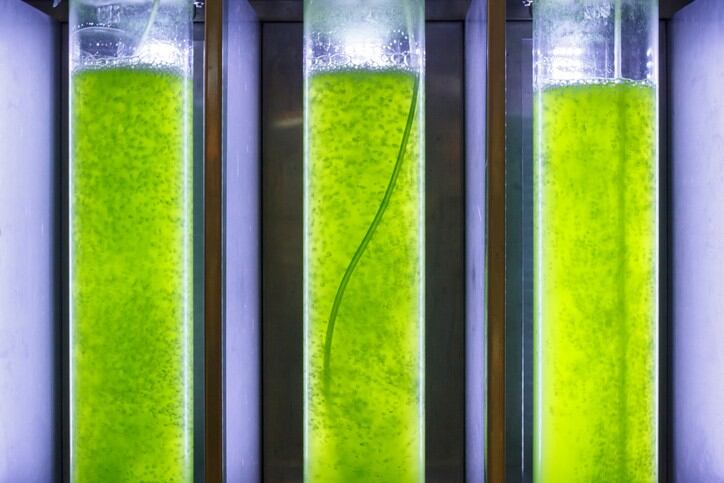Flinders University Professor Wei Zhang, who is co-leading a bid to establish a national Marine Bioproducts Cooperative Research Centre (MB-CRC) in Australia, says the single-cell photosynthetic organisms from the ocean could be the solution to the world’s protein shortage.
The CRC’s mission is to find ways to develop the third-generation of Australian high-value marine bioindustry (as opposed to the first-generation of fisheries and the second-generation of aquaculture) and transform Australia’s emerging marine bioproducts sector into a globally competitive industry.
“Our research spans the entire value chain, from microalgae cultivation and circular advanced biomanufacturing to the development of high-value functional food,” Professor Zhang says.
“Microalgae come in a diverse range of nutritional profiles and advanced cultivation strategies can be developed for tuning microalgae to produce protein-, oil- and carbohydrate-dominant types that can be processed into a broad range of functional foods, including healthy cell patties, pastes, jams and even caviar.”
Two freshwater microalgal products currently on the market are the high protein chlorella and spirulina varieties used in the production of foods such as green pasta, drinks and beverages.
Marine species are of significant interest as they do not require scarce freshwater and crop land. Their unique nutritional profiles such as their high DHA and EPA content are essential for infant and brain development and cardiac health.
Land boost
Bioreactors for upscaling upscaled aquatic production of photosynthetic microalgae can also help to combat greenhouse gas emissions and climate change. One 90 x 90 x 210 cm (3 x 3 x 7 ft) bioreactor unit can absorb up to 400 times more carbon dioxide than the same footprint of trees.
Using sunlight, certain varieties of microalgae create oxygen and convert carbon dioxide into organic carbon (protein, carbohydrates, pigments, fats and fibres), just like plants, but do not require valuable arable land for their production.
“They are therefore often called the rainforests of the oceans,” says Associate Professor Kirsten Heimann, senior lecturer in biotechnology at Flinders University.
“Using sunlight, photosynthetic microalgae create oxygen and convert carbon dioxide into organic carbon (protein, carbohydrates, pigments, fats, fibres, and micronutrients), just like plants, but do not require valuable arable land for their production.
“This means microalgae can be sustainably harvested and converted into eco-friendly superfoods,” she says. “Putting one and one together, microalgae and innovative production and processing could help to service the world’s booming population and growing demand for sustainable protein production.”


